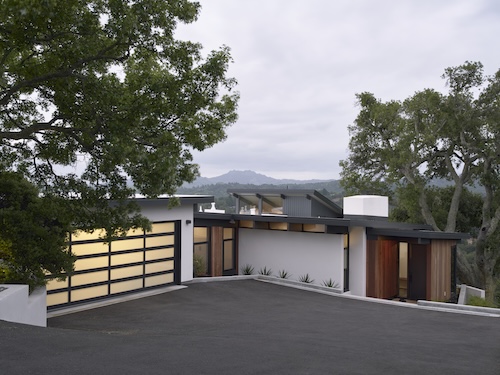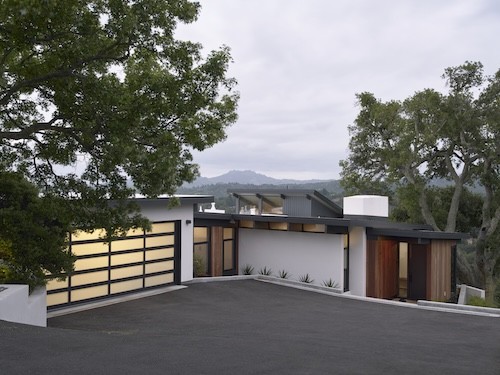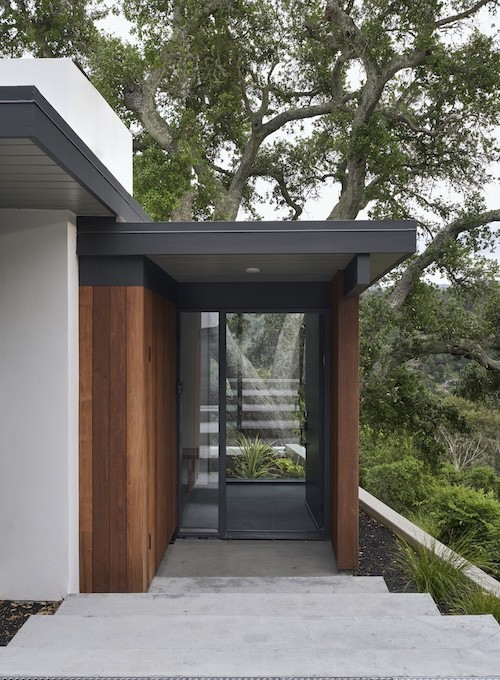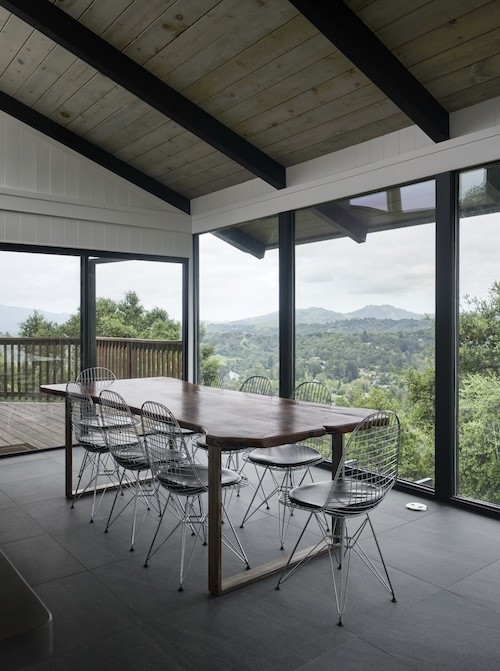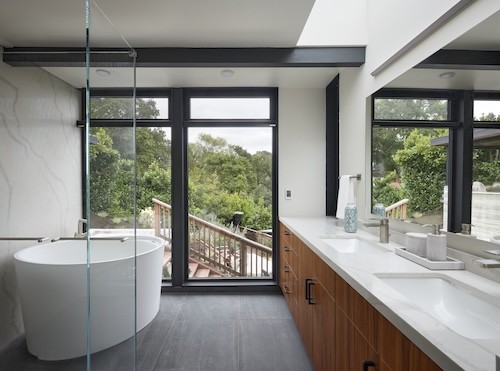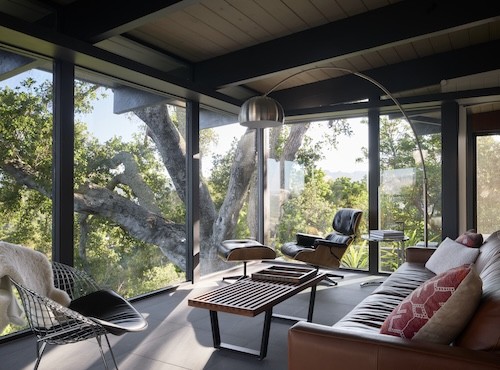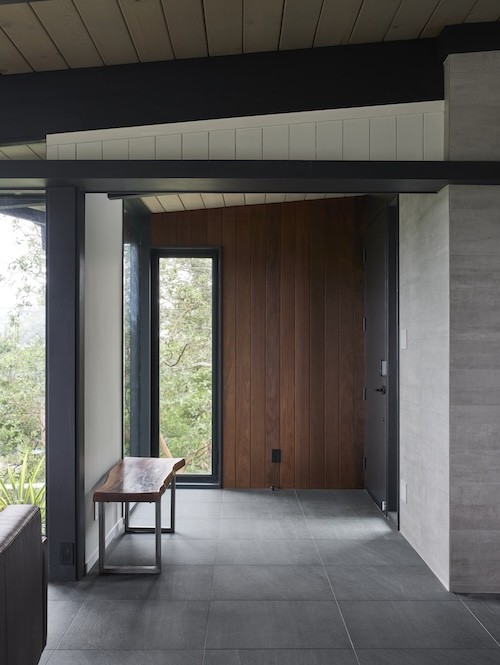San Francisco-based Klopf Architecture is known for its dedication to renovating more than 350 mid-century modern and modern homes, 235 of them Eichlers. Its newest effort was an update to a 1956 design by Robert Klemmedson, the renowned Bay Area architect. It’s sited at the top of a 1.6-acre lot in Orinda, California. A+A recently interviewed project architect Geoff Campen about the remodel via email:
Who was the client?
A young family of four—a couple with two active young boys—sought to make better use of their home’s unique setting in Orinda, a region known for its warm climate and sweeping valley views. While the property was surrounded by mature oak trees and offered expansive vistas, the existing home lacked inviting, comfortable outdoor areas that encouraged everyday use. The limited access points and awkward transitions between indoor and outdoor spaces made it difficult for the family to fully engage with their surroundings. Their goal was to create outdoor environments that felt like true extensions of the home—spaces where the kids could play freely, the parents could unwind, and the family could host friends and spend time together year-round, all while embracing the beauty and serenity of their natural setting.
The assignment?
The assignment was to modernize and refresh the home while honoring the integrity of the original Klemmedson-designed mid-century modern architecture. The clients came to Klopf Architecture with a clear vision: update the home to better support their daily lives while integrating new functional elements in a way that felt cohesive and intentional. Key goals included: improving the entry sequence for a clearer and more welcoming arrival experience; creating a seamless architectural connection between the detached garage and the main house; adding practical new spaces like a mudroom and laundry room; expanding and reconfiguring the primary suite to include a larger bathroom and walk-in closet; and activating the outdoor areas to take full advantage of the site’s sweeping valley views—complete with an outdoor kitchen and fire pit for gathering and relaxation.
The design intent?
The design intent was to preserve the essence of the original mid-century modern architecture while enhancing the home’s comfort and livability. Located at the end of a cul-de-sac with expansive views beyond, the home’s low-slung profile was deliberately maintained to honor its quiet street presence. A key challenge—and opportunity—was the site’s changing grade: the detached garage sat notably higher than the main house. The goal was to resolve this elevation difference with a seamless architectural intervention that not only unified the previously disconnected structures, but also reinforced the overall design logic and flow of the home.
How did the site drive the design?
The 1.6 acre sloped lot offered endless views of the natural landscape complete with mature oak trees and the green valley terrain beyond. It was important to activate the outdoor spaces, creating a more inviting and comfortable option for the homeowners to enjoy the warm, California weather year-round.
Designing within the constraints of the sloped site posed one of the project’s central challenges. The detached garage sat at a higher elevation than the main house, requiring a solution that ensured architectural and geometric compatibility between the two structures. Rather than create a purely utilitarian link, Klopf Architecture introduced an intentional connection that contributes to the overall architectural language. A notable pinch point in the plan—where differing geometries converged—was treated as a hinge point, turning a potentially awkward juncture into an architectural feature. This area now functions as both a transition and a moment of design interest that unifies the overall plan.
The material palette?
A modern blend of natural and refined materials defines the home’s character. Warm vertical-grain wood, smooth concrete, and charcoal-gray porcelain tile create a grounded, tactile base. Soft white walls keep interiors light and airy, while blackened steel and dark trim provide crisp definition. Together, these elements balance warmth and precision, reinforcing the home’s modernist identity and seamless indoor-outdoor flow.
How does the home work within the context of what’s around it?
The home is carefully attuned to its Orinda setting, engaging both the landscape and the views beyond. Set against a backdrop of mature oak trees and overlooking the valley, the design opens the home to its surroundings—both visually and experientially. By reworking the connection between the house and the previously underutilized outdoor spaces, the renovation activates the landscape as an extension of daily living. Covered patios, outdoor dining areas, and a built-in fire pit create comfortable moments to pause, gather, and enjoy the temperate climate. Large openings and aligned sightlines frame the surrounding trees and distant hills, reinforcing a strong sense of place. The result is a home that feels rooted in its environment—modern and intentional, yet in constant dialogue with the nature around it.
For more, go here.

